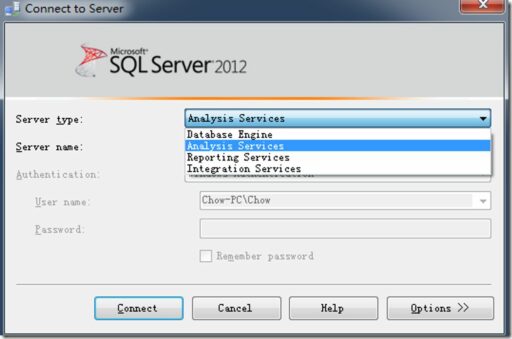Table of Contents
In the competitive field of data engineering, a standout resume is crucial for catching the eye of recruiters and landing your dream job. This article provides five essential tips for crafting a data engineer resume that not only highlights your technical skills and experience but also showcases your unique abilities in a way that resonates with hiring managers. Whether you’re a seasoned professional or a newcomer to the field, these tips will help you construct a resume that is both compelling and effective.
Key Takeaways
- Adhere to resume best practices by using a professional font, clear spacing, bullet points, and concise descriptions.
- Highlight your technical skills, ensuring you cover areas like SQL, cloud computing, and data architecture.
- Showcase your project portfolio to demonstrate real-world application of your skills and impact on business solutions.
- Integrate relevant keywords from the job description to align with what recruiters are searching for.
- Document your achievements using metrics to quantify your success and provide concrete examples of your contributions.
1. Resume Best Practices

Crafting a resume that stands out begins with adhering to resume best practices. The layout and clarity of your resume are crucial; a cluttered or confusing format can deter hiring managers from reading further. To ensure your resume makes a strong impression, consider the following tips:
- Use a standard layout to maintain professionalism.
- Employ action words to highlight your capabilities.
- Quantify your achievements to demonstrate your impact.
- Tailor your resume for each job application.
- Meticulously check for errors, typos, and grammatical mistakes.
Preparing a standout resume requires attention to detail and a strategic approach. Gather information on your past roles and achievements, select a resume format that best showcases your skills, and customize your resume for every job. Incorporate relevant keywords from the job description and ensure your document is polished and error-free.
Remember, your resume is your first opportunity to make a lasting impression. Include only pertinent experience and skills, and limit your work history to the most recent 10 years. By following these guidelines, you’ll create a resume that rises above the competition.
2. Technical Skills Highlight

In the competitive field of data engineering, highlighting your technical skills is crucial. Employers seek candidates with a strong foundation in technologies pivotal to Big Data Engineering. Instead of merely listing your skills, provide context by detailing how you’ve applied them in real-world scenarios.
For instance, rather than stating:
- Hadoop, Spark, Python, SQL
You could elaborate:
- Developed ETL pipelines using Python and SQL to improve data processing speed by 30%.
- Leveraged Hadoop and Spark for large-scale data analysis, resulting in a 20% reduction in processing costs.
By showcasing how you’ve utilized your skills to drive business outcomes, you make a more compelling case for your expertise.
Remember to align your skills with the job description. Some essential skills for a data engineer include Python programming, SQL database management, and familiarity with big data tools like Hadoop or Spark. Tailor your resume to reflect the skills most relevant to the position you’re applying for, and substantiate them with examples from your professional experience.
3. Project Portfolio Showcase

In the competitive field of data engineering, a well-presented project portfolio can be a game-changer. It’s not just about listing your projects; it’s about telling a story of your professional journey. Include a section on your resume dedicated to significant projects you’ve worked on. This could include academic projects, personal projects, or professional work. For each project, provide a brief description, the technologies used, and the impact it had.
Your project portfolio is your chance to demonstrate your practical skills and your ability to see a project through from conception to completion.
Remember to highlight any projects that involved data integration and strategies for efficient data collection, as these are highly sought after by employers. If you’ve contributed to open-source projects or have a personal website, like SethT, that covers relevant topics, be sure to include links.
Here’s an example of how to structure your project showcase in a table:
| Project Title | Technologies Used | Impact |
|---|---|---|
| Data Lake Optimization | Hadoop, Spark, AWS | Reduced data retrieval time by 30% |
| Real-time Analytics Platform | Kafka, Python, Tableau | Enabled live business intelligence insights |
By clearly documenting your projects, you make it easier for hiring managers to assess your skills and envision you as part of their team.
4. Relevant Keywords Integration

In the realm of data engineering, understanding and leveraging SEO (Search Engine Optimization) in your resume is more critical than ever. Many companies use Applicant Tracking Systems (ATS) to filter and rank resumes based on specific keywords. These keywords often reflect the skills and experiences most relevant to the job. To ensure your resume passes through these filters, it’s essential to incorporate relevant keywords from the job description.
To effectively integrate these skills into your resume, consider analyzing job descriptions and tailoring your resume to each one. Use synonyms to cover a broader spectrum of relevant terms and showcase achievements where you’ve applied these skills with impactful results.
However, avoid keyword stuffing, as it can work against you. Integrate keywords naturally within the context of your achievements and skills. For example, if the job description emphasizes ‘data management‘, illustrate this skill with a specific example, like ‘Led a team in implementing a robust data management system, resulting in a 20% increase in data retrieval efficiency.’ This approach ensures that your resume is ATS-friendly while still being readable and engaging for human recruiters.
5. Measurable Achievements Documentation

Documenting measurable achievements is crucial in demonstrating your impact as a data engineer. For each position you’ve held, aim to showcase three to five significant accomplishments. Quantify these achievements to provide a clear picture of your contributions. For instance:
- Improved data pipeline efficiency by 20% through proactive maintenance, reducing downtime.
- Enhanced data retrieval speeds by 15% by optimizing big data storage solutions.
Remember, a resume that lacks quantifiable results can be a deal-breaker for hiring managers. According to a CareerBuilder survey, 34% of hiring managers view the absence of quantifiable achievements as a major red flag.
Ensure that your resume goes beyond a mere task list and paints a vivid picture of your professional journey. Highlight skills and achievements that align with the job description, and don’t forget to include a complete inventory of your technical and soft skills.
When listing achievements, consider using a table for clarity, especially if you have a long work history:
| Years of Experience | Achievement | Impact |
|---|---|---|
| 10-15 years | Data pipeline maintenance | 20% efficiency increase |
| 10-15 years | Big data storage optimization | 15% retrieval speed enhancement |
Conclusion
In the competitive field of data engineering, your resume is your personal billboard to the hiring world. It’s essential to craft it with care, ensuring it highlights your technical expertise, project experience, and ability to deliver measurable business value. Remember to use professional formatting, incorporate relevant keywords, and quantify your achievements. By following the tips outlined in this article, you’ll be well on your way to creating a data engineer resume that not only stands out but also truly represents the depth of your skills and experiences. Now, go forth and make your mark on the data-driven future!
Frequently Asked Questions
What are the key elements of a standout data engineer resume?
A standout data engineer resume should include a professional font and spacing, bullet points for clarity, a strong opening summary highlighting relevant skills and experiences, clear and concise descriptions, the integration of keywords from the job description, measurable achievements, and a truthful representation of your accomplishments.
How important are technical skills on a data engineer resume?
Technical skills are crucial on a data engineer resume as they showcase your ability to handle large datasets and your expertise in various tools and technologies that are essential in the field of data engineering.
Should I include a project portfolio on my data engineer resume?
Yes, including a project portfolio can greatly enhance your data engineer resume. It provides tangible evidence of your skills and shows how you apply them to solve real-world problems.
How can I ensure my resume includes relevant keywords for a data engineer role?
To include relevant keywords, review the job description carefully and incorporate the terms and phrases used there into your resume. Also, stay updated on industry terms and technologies that are commonly sought after in data engineering roles.
Can you provide examples of measurable achievements for a data engineer?
Measurable achievements for a data engineer might include optimizing data processing times by a certain percentage, increasing data accuracy, reducing downtime, or contributing to a project that resulted in a significant cost saving or revenue increase for the company.
How can I differentiate my data engineer resume from the competition?
To differentiate your resume, focus on your unique combination of technical skills, project experiences, and problem-solving abilities. Tailor your resume to align with the specific needs of the industry and the company you’re applying to, and make sure to quantify your achievements.





